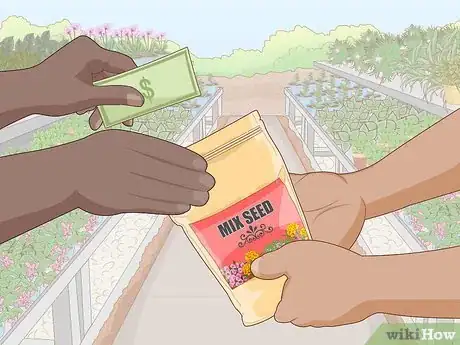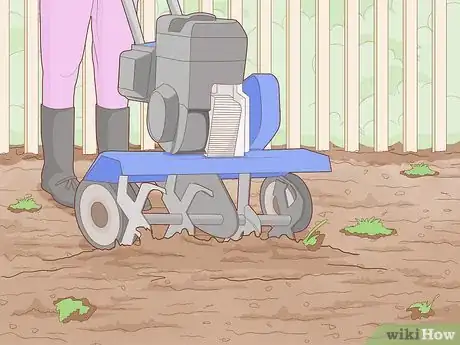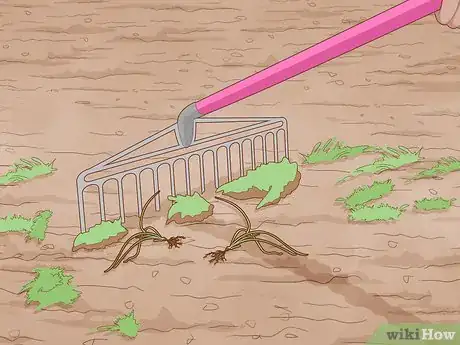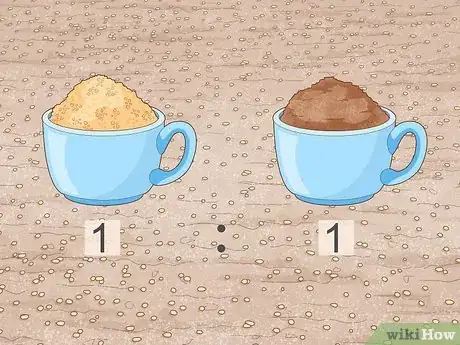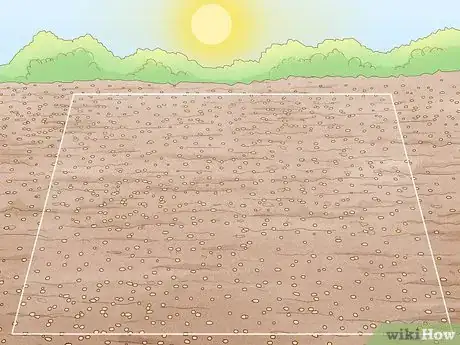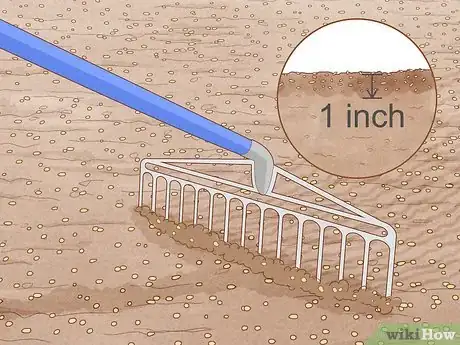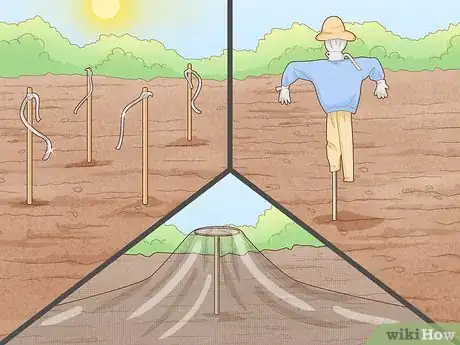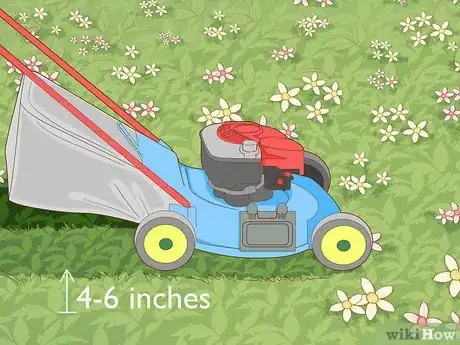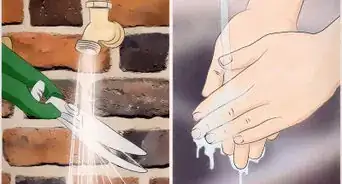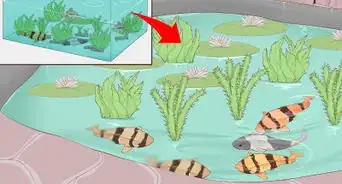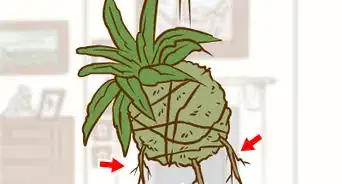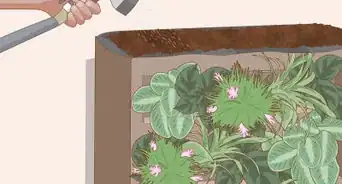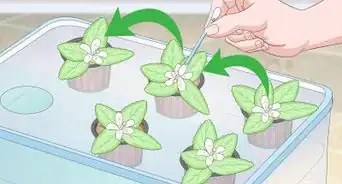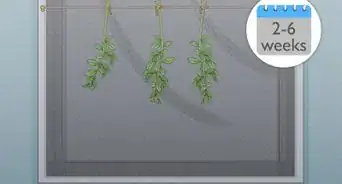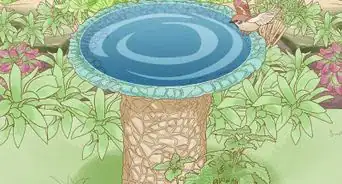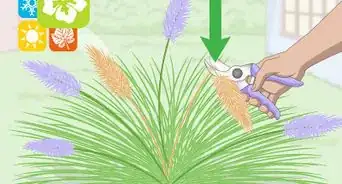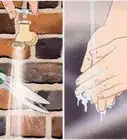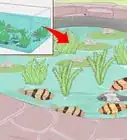This article was co-authored by Sina Kamran. Sina Kamran is a Hardscaping Specialist and the Owner of Design Scapes, Inc. in Santa Monica, California. With over 15 years of experience, he specializes in customized, site-specific hardscaping and landscaping design/build projects. He's a certified National Concrete Masonry Association (NCMA) designer, a certified installer with the Interlocking Concrete Pavement Institute (ICPI), and a Rain Bird Certified Irrigation Professional. Additionally, Design Scapes, Inc. has many 5-star rated reviews.
There are 8 references cited in this article, which can be found at the bottom of the page.
wikiHow marks an article as reader-approved once it receives enough positive feedback. In this case, 100% of readers who voted found the article helpful, earning it our reader-approved status.
This article has been viewed 125,716 times.
A wildflower garden is an excellent addition to any property. Not only do these flowers look beautiful, but they are relatively low maintenance and require less care than the average lawn. To plant your own wildflower garden, select ground on your property that gets the most sunlight. Prepare the area by tilling up any grass or weeds. Then, spread your seeds and water them every day until the flowers start germinating.
Steps
Selecting the Right Ground and Flowers
-
1Choose a spot that gets at least 6 hours of sunlight per day. Wildflowers need a lot of sunlight to flourish. Start by surveying your property and finding the sunniest spot. Plan on locating your garden here.[1]
- Certain wildflower species may have different sunlight needs. Always check with the instructions on your seed pack or ask an employee at the nursery.
-
2Use a soil-testing kit to check for nutrient deficiencies. Wildflowers generally grow well in most types of soil, even with deficiencies, but some deficiencies might inhibit growth. Once you find a sunny spot, run a soil analysis on the area. Buy a home testing kit from a nursery or garden center. Then mix some soil with distilled water and drop it into the kit. The results will tell you if the soil is deficient in any nutrients.[2]
- Different soil testing kits may have different procedures. Always follow the instructions on the product you use.
- If this spot shows nutrient deficiencies, you can still plant here. Just plan on fertilizing the area before planting the seeds.
Advertisement -
3Purchase a seed mix suited to your area. Wildflower seeds usually come in premade packages that mix several flower types. The packs usually include flowers that grow well in specific geographic areas or climates. Find a pack that corresponds to your area.[3]
- If your local nursery doesn’t have the seed mixture you want, then look online for different blends.
- If you prefer, you can also mix your own seed pack. Purchase 3-5 different seed types that are suited to your area and mix them together to create your own unique blend.
Preparing the Ground
-
1Plant in the early spring when there is no risk of frost. Frost can kill off a batch of seeds before they germinate, so don’t start planting until the risk of frost has completely passed. Check your local weather forecasts to make sure there is no more frost predicted, then start the planting process.[4]
-
2Till the area to break up any grass and weeds. This removes any plants in the area that may inhibit the wildflowers from growing. Use a rototiller to grind all the way down to the soil. Run over the entire area that you want to plant on.[5]
- If there was tall grass in the area, mow it on the lowest setting before rototilling.
- Use an aerator rake if you don’t have a gas-powered rototiller. Press hard to rip up grass and weeds. You may have to pass over the area more than once with a manual aerator.
-
3Rake away the excess plants after rototilling. Use a plastic or metal garden rake and make a pile of all the remnants left behind after aerating. Then put them in a bag or pail and remove them from the area.[6]
- If you have a compost pile on your property, put these remnants there to recycle them.
- Aerate again if you find grass and weeds still stuck in the soil while raking. These can start weed growths that might overtake your flowers.
-
4Apply fertilizer only if there are soil deficiencies. It's not generally recommended to fertilize the soil before you plant wildflowers because it could encourage weed growth. However, if your soil test showed that the soil is lacking in nutrients, you'll need to replace them. If only one nutrient is lacking, choose a fertilizer with that specific nutrient. If all the main soil nutrients are deficient, use a generalized 1-3-2 fertilizer, meaning that it’s 1-part nitrogen, 3 parts phosphorus, and 2 parts potassium.[7]
- For general application, spread 2–3 pounds (0.91–1.36 kg) of fertilizer per 100 square feet (9.3 m2) of garden. Adjust your application if the product gives different directions.[8]
- If your fertilizer gives a range for the amount to apply, choose the lower end of that recommendation. For example, if the suggested range is 3–5 pounds (1.4–2.3 kg), choose 3.[9]
Planting the Seeds
-
1Plant 5 ounces (0.14 kg) of seed per 1,000 sq ft (93 m2) of ground. Add up the total area of the garden you’re planning and use this proportion to determine how much seed you should use. Measure out this amount and load it into a spreader or bucket, depending on what equipment you have.[10]
- For larger areas, seed at a rate of 10 lb (4.5 kg) per acre.
- To calculate area, measure the garden's length and width. Then multiply those 2 numbers together to get the total area. Keep your measurements consistent. If you measured in feet on one side, don't use inches for the other.
- This is a general recommendation for the amount of seed to spread. Check with the product recommendation or nursery employee to see if there is an alternate density you should use.
-
2Mix the seed with an equal amount of sand in a spreader. The sand helps absorb moisture and ensure a uniform distribution for the seeds. Pour the sand into the spreader and mix it up with your hands. Make sure the seeds and sand are mixed together uniformly.[11]
- You can also mix the ingredients into a bucket and spread the seeds by hand. Use the same amount of sand as you would if you were using a spreader.
-
3Spread the seed through the whole planting area. Either walk with a spreader open or throw the seeds by hand. Work in a uniform pattern so you spread an even layer of seed around the garden.[12]
- Spread until you’re out of seeds. If you reach the end of the garden and still have some leftover, repeat the process until you’re out of seed.
-
4Rake the soil lightly to mix in the seeds. Use a plastic or metal garden rake and disturb the top 1 inch (2.5 cm) of soil. This ensures good contact between the soil and seeds to encourage growth.[13]
-
5Water the soil every day for 4-6 weeks until the seeds germinate. Wildflower seeds need moisture to get started. Moisten the soil every day until the seeds germinate. When you see sprouts starting to come up from the soil, then the seeds have successfully germinated. At this point, the wildflowers require less maintenance.[14]
- Don’t drown the seeds. Only apply enough water to keep the soil moist.
- Don’t water on days when it rains.
Maintaining the Garden
-
1Put up defenses to protect your seeds from birds. Until your seeds germinate, birds may eat them. There are a number of ways to protect the seeds until the flowers start growing.[15]
- Popular low-tech methods include putting up a scarecrow, hanging reflective tape around the garden, and covering the seeds with nets.
- For a more technological approach, motion-activated sprinklers will scare birds away.
- If the birds to get to your seeds, spread some more to replace them.
-
2Remove weeds if you see them. In general, wildflowers can grow side by side with weeds. However, some more invasive weeds could overtake the flowers. Monitor your garden and pull any weeds you see to keep your garden healthy.[16]
- If you use weed killer or herbicide, always make sure that it’s safe to use on your flowers.
-
3Mow the garden down at the end of the fall. By the fall, most wildflowers will stop blooming. At this point, use a lawnmower and mow them down at the highest setting on your mower. If these seeds were seasonals, then till the soil to prepare for re-planting next season.[17]
- Even if the flowers you plant are perennials, mow them down to 4–6 inches (10–15 cm) to help them go into hibernation and return next year.
Expert Q&A
-
QuestionHow do I control weeds in my flower beds?
 Sina KamranSina Kamran is a Hardscaping Specialist and the Owner of Design Scapes, Inc. in Santa Monica, California. With over 15 years of experience, he specializes in customized, site-specific hardscaping and landscaping design/build projects. He's a certified National Concrete Masonry Association (NCMA) designer, a certified installer with the Interlocking Concrete Pavement Institute (ICPI), and a Rain Bird Certified Irrigation Professional. Additionally, Design Scapes, Inc. has many 5-star rated reviews.
Sina KamranSina Kamran is a Hardscaping Specialist and the Owner of Design Scapes, Inc. in Santa Monica, California. With over 15 years of experience, he specializes in customized, site-specific hardscaping and landscaping design/build projects. He's a certified National Concrete Masonry Association (NCMA) designer, a certified installer with the Interlocking Concrete Pavement Institute (ICPI), and a Rain Bird Certified Irrigation Professional. Additionally, Design Scapes, Inc. has many 5-star rated reviews.
Hardscape Specialist Make sure that you get all the weed roots out if you hand-pull them; that way, they don't grow back. If any soil gets loose from pulling weeds, tamp it down a bit so a new seed won't get in there. Then, cover the area up with mulch after you're done weeding to stop new weeds from growing again.
Make sure that you get all the weed roots out if you hand-pull them; that way, they don't grow back. If any soil gets loose from pulling weeds, tamp it down a bit so a new seed won't get in there. Then, cover the area up with mulch after you're done weeding to stop new weeds from growing again. -
QuestionHow do I prepare wildflowers for the winter?
 Rosa JacobsenCommunity AnswerWildflowers are generally pretty hardy. If they are in the ground, mulch with leaves or garden debris. Don't use grass cuttings as they can clump and rot, causing problems with rot/bacteria depending on your temperatures. Rake off your coverings after the worst of the frosts. If you have planted specimens in pots, these will have to be protected from heavy frosts/freezing. An outbuilding, garden fleece or sacking are enough.
Rosa JacobsenCommunity AnswerWildflowers are generally pretty hardy. If they are in the ground, mulch with leaves or garden debris. Don't use grass cuttings as they can clump and rot, causing problems with rot/bacteria depending on your temperatures. Rake off your coverings after the worst of the frosts. If you have planted specimens in pots, these will have to be protected from heavy frosts/freezing. An outbuilding, garden fleece or sacking are enough. -
QuestionHow do I get rid of deep-rooted flowers?
 Community AnswerDig deep into your garden to remove the root fully. You may have to do this a few times if you don't get the entire root and the flower is particularly resilient.
Community AnswerDig deep into your garden to remove the root fully. You may have to do this a few times if you don't get the entire root and the flower is particularly resilient.
Things You'll Need
- Wildflower seeds
- Rototiller
- Rake
- Spreader
- Water
- Sand
Expert Interview

Thanks for reading our article! If you'd like to learn more about landscaping, check out our in-depth interview with Sina Kamran.
References
- ↑ https://www.hgtv.com/design/outdoor-design/landscaping-and-hardscaping/wildflower-gardening
- ↑ https://www.hgtv.com/design/outdoor-design/landscaping-and-hardscaping/wildflower-gardening
- ↑ https://www.thegardenglove.com/how-to-grow-a-wildflower-garden/
- ↑ https://www.thegardenglove.com/how-to-grow-a-wildflower-garden/
- ↑ https://youtu.be/rjgVeHxYzD0?t=91
- ↑ https://youtu.be/rjgVeHxYzD0?t=116
- ↑ https://aggie-horticulture.tamu.edu/wildseed/growing/fertilization.html
- ↑ https://agrilifeextension.tamu.edu/asset-external/easy-gardening-fertilizing/
- ↑ https://aggie-horticulture.tamu.edu/wildseed/growing/fertilization.html
- ↑ https://hgic.clemson.edu/factsheet/wildflowers/
- ↑ https://hgic.clemson.edu/factsheet/wildflowers/
- ↑ https://www.hgtv.com/outdoors/gardens/garden-styles-and-types/establishing-a-wildflower-meadow
- ↑ https://hgic.clemson.edu/factsheet/wildflowers/
- ↑ https://hgic.clemson.edu/factsheet/wildflowers/
- ↑ https://www.hgtv.com/design/outdoor-design/landscaping-and-hardscaping/wildflower-gardening
- ↑ https://hgic.clemson.edu/factsheet/wildflowers/
- ↑ https://www.thegardenglove.com/how-to-grow-a-wildflower-garden/
About This Article
Creating a wildflower garden is easy to do and is both beautiful and low maintenance. Look for a spot that gets at least 6 hours of sunlight per day and doesn’t hold a lot of standing water whenever it rains. When you’re choosing seeds, purchase a premade mix of flowers that will thrive in your area. Mix the seeds with an equal amount of sand so they don’t dry out and they’re evenly distributed. Then, walk around the area with a seed spreader or simply throw them out by hand. Work in a pattern so you cover the area evenly. Water the soil every day for at least 4 weeks so the seeds can sprout. For tips about how to apply fertilizer for a wildflower garden, keep reading!


